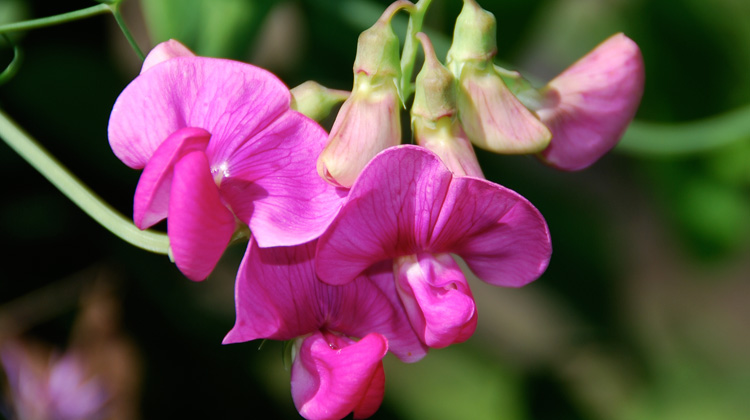Perennial Sweet Peas one of the most beautiful and scented flowers is sweet peas. It has butterfly-like and frilly flowers. The fragrance of these flowers is just like orange blossoms and honey. Lathyrus odoratus is an ancient climbing perennial vine. The colour of its flowers is bright and attractive.
Height: The average height of this flowering plant is up to 10 feet.
Blooming Time: These flowers start blooming at the beginning of the summer and climb upward with the help of their tendrils.
Spreading Rate: Sweet peas are long-lasting, frost and hardy flowers that grow with slow speed.
Foliage: The foliage of this flower become pale yellowish at the end of the summer season.
Native: Sweet peas are first seen in eastern regions of the Mediterranean and are cultivated from the 1600s till now.
Family: Fabaceae is its belonging family.
Genus: Lathyrus
Species: L. latifolius
Scientific Name: Perennial Sweet pea is scientifically known as Lathyrus latifolius L.
Common Names: The common names for these flowers are
- Everlasting pea
- Sweet pea
- Perennial pea
USDA hardiness: Its USDA hardiness zone range from 5-9.
Light Range: The basic need for these flowers is in full sunlight along with partial shades.
PH Range: Its pH range is 5-7.5.
Soil Requirements: Sweet Peas loves to grow in clay or sandy soil.
Water needs: For the healthy growth of these flowers, the gardener should provide average water to these flowers.
Frequently Asked Question:
Are perennial Sweet peas invasive?
Yes, these flowers are invasive. In addition to this, these flowers are highly toxic. And ha the ability to resist deer.
Does Lathyrus latifolius grow annually?
Yes, these flowers grow annually because sweet peas germinate, develop and blooms all in a single year. So the gardener needs to regrow this flowering plant every year.
What is the best time to collect seeds from the sweet pea plant?
The ideal time to collect the seeds of these flowers is early September.

